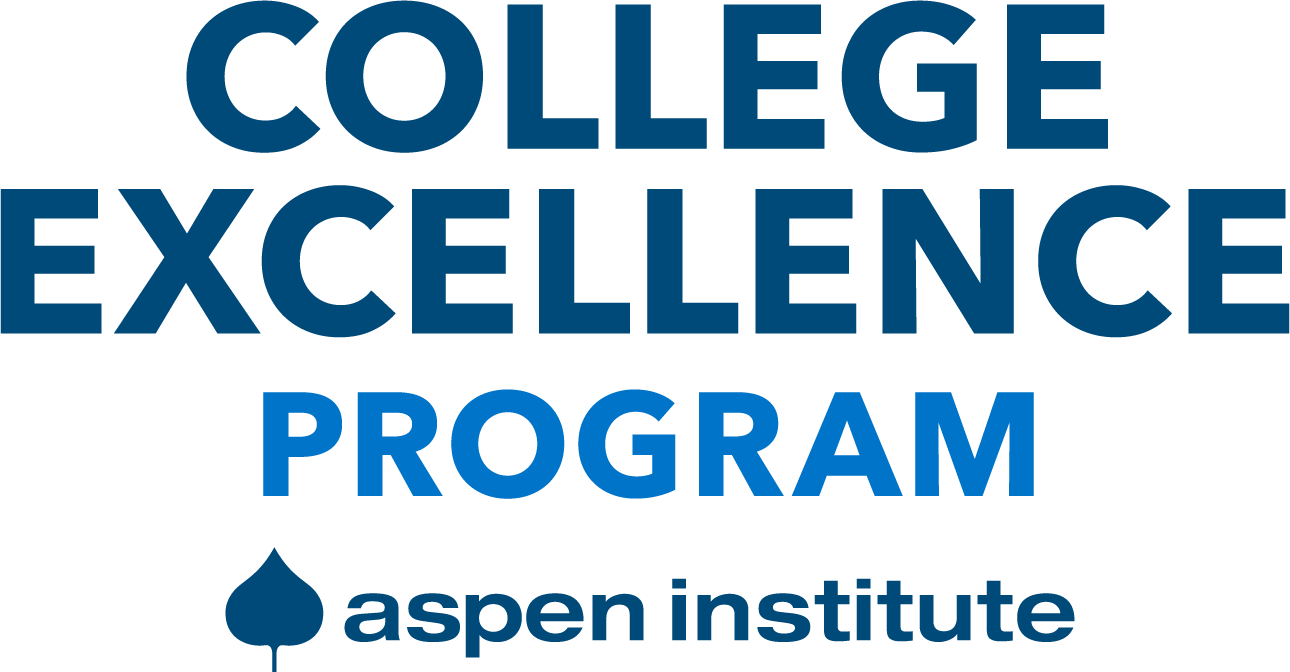
Data Use Assessment Tool
This tool will help college leaders reflect on their current data use practices, considering how those practices support excellence in student outcomes.
The items in the following assessment tool reflect strong practices observed through Aspen’s research and direct engagements with excellent community colleges, which we define as those achieving high and improving levels of student success (1) both while in college and after graduation (2) overall and for students of color and low-income students. The assessment tool is organized in several domains of practice emerging from Aspen’s research and prompts users to rate their institution’s adoption of each item within each domain. Once complete, a summary of scores will allow colleges to identify strengths and weaknesses in specific practices aligned to each item and also to observe which domains most need improvement.
In this assessment tool, the term “student success” has the following meaning:
- Success in college: Students (1) learn and (2) complete credentials.
- Success after college: Students (1) get good jobs and/or (2) transfer and attain a bachelor’s degree.
- Access and success for all students: For Black, Hispanic, Indigenous, and low-income students, the college ensures high absolute rates and minimizes gaps in (1) learning and completion outcomes for students in college, (2) transfer and workforce outcomes for students after college, and (3) enrollment of different demographic groups relative to the college’s service area.
Directions: Assess the extent to which your college engages each of the following practices, according to the scoring rubric.
Data Use Assessment Inquiry Guide
Data Use Assessment Inquiry Questions
How would you characterize data use at your college? What in your Aspen data use assessment tool results are aligned with that perception? Where is your college strongest and weakest on data use?
- In using data to build a vision and reform agenda that promote higher and more equitable student outcomes? In which particular questions/domains?
- In engaging internal and external stakeholders in the reform agenda through the use of data? In which particular questions/domains?
- In ensuring that data drive student success reforms? In which particular questions/domains?
- In investing in a sustainable data culture? In which particular questions/domains?
What does your assessment reveal about how effectively managers, faculty, and staff collegewide use data to advance student outcomes reforms?
- By examining data about student success in learning, completion, transfer, and labor market outcomes?
- Through alignment of human capital policies (e.g., employee incentives, professional development) with data on student outcomes?
- In remaining focused on a limited set of reform priorities?
- In interactions with external partners (e.g., employers, K-12, and universities)?
- In assessing impact and using that information to drive decisions about continuing, modifying, and/or stopping reform efforts?
- Among areas of relative weakness, what seems most important to address?
What do your assessment results and answers to the questions above reveal about how effectively the president and other senior college leaders use data to advance student outcome reforms?
- By examining data about student success and community/workforce?
- By analyzing student success rates at the college and after completion?
- In crafting reform strategies and priorities?
- In engaging internal stakeholders?
- In engaging external stakeholders (e.g., employers, K-12, and universities)?
- In ensuring that analysis of results drives college priorities, human capital strategies, and resource allocation?
- In communicating the need for change and celebrating success?
- Among areas of relative weakness, what seems most important to address?
If multiple people took the assessment, are there any areas of disagreement?
- In what areas?
- Why might this be? Could the disagreements reflect fundamental differences in what people believe constitutes effective data use?
Next Steps
- What 1-5 important things have you uncovered about your approach to data use from your assessment tool? How do those things relate to advancing priority student success reforms?
- Among the areas of strength, what do you want to keep doing and perhaps enhance?
- Among the areas of weakness, what few changes do you think would make the biggest positive difference?
- What challenges do you have (or anticipate) in further building a culture of data use, and how might you address them? As much as possible, identify specific audiences (e.g., faculty of a department, academic deans, financial aid advisors, the president) and define specific challenges associated with each.
- What immediate next steps will you take to ensure progress on these lessons learned?
